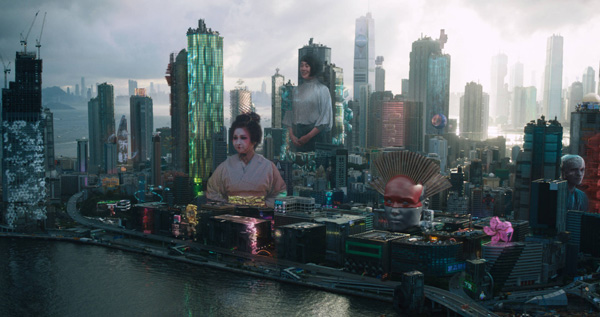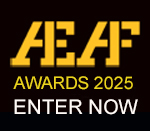By official close of entries, AEAF Awards has received an unprecedented number of entries in the Feature Film VFX category from some of the world’s top visual effects and animation teams.
AEAF Awards Feature Film Entries Break Records
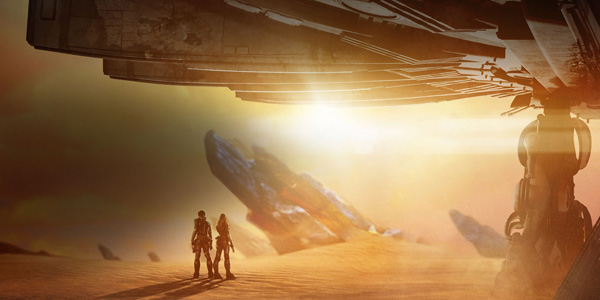
By the official close of entries on 30 June, AEAF Awards 2017 has received an unprecedented number of entries in the Feature Film VFX category from some of the world’s top visual effects and animation teams. All together, feature film entries include work from Cinesite, ILM, Framestore, MPC, Rodeo FX, Iloura and Weta Digital - some of which are yet to be entered and shown at any festivals elsewhere.
As a result AEAF organizers are anticipating some intense decision-making during the judging period, and also a lot of fun at the Awards Night in August when clips from all finalist projects across all categories are screened. Notes about some of these projects are included below, as available, and links to articles about others that we have featured on the Digital Media World website.
Be sure to attend the AEAF Awards Night to see breakdowns of the teams’ effects in all categories on the big screen on 16 August in Sydney at the Chauvel Cinema. This exciting event follows AEAF’s Perfect Day of Speaker sessions. Find all details here, and Booking information here.
For ‘Dr Strange’, a film that rolls fantasy, science fiction and spirituality together into one project, both ILM Singapore and Framestore have entered work. Framestore’s work includes many of the story’s signature Mandelobrot sets, dream-like, kaleidoscopic interior shots that fold the environments, pulling them apart and re-configuring in complicated patterns around the characters. Because of the amount of movement within the whole of the detailed set, nearly everything needed to be animated.
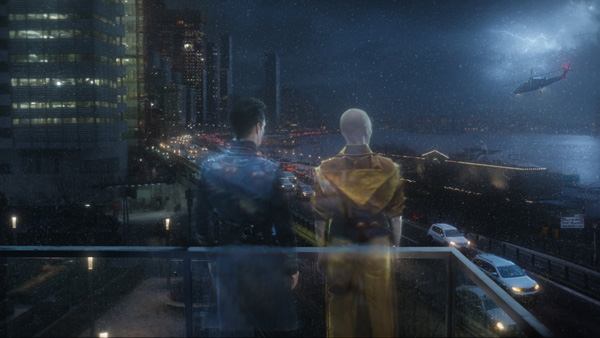
Doctor Strange uses Eldritch magic to battle his nemeses Kaecilius and an army of Zealots. The magic is light-based, producing sparks and energy. After trying several techniques, the team used a CG set-up in Houdini to control the length, curvature and intensity of each spark.
The astral plane is home to Dr Strange’s astral form that exists in the real world, although not visible to people, and was depicted by a transparent character on-screen as established in the comics. Framestore used transparency, backlighting techniques and particles to create the look on screen. His own Cloak of Levitation is in fact a fully-formed character with its own personality, which can often be seen flying about alone. The team needed to animate the cloak with enough charisma, without looking cartoony.
‘Fantastic Beasts and Where to Find Them’ was one of the biggest films all year for VFX studios around the world. Rodeo FX and Framestore entered their work into AEAF. Framestore was responsible for five of the film’s magic beasts, and also Newt Scamander's suitcase, the key prop in the film that releases the creatures into New York City. The team worked on animation tests in previsualisation to get their creatures moving, looking and acting as required, making it easier to visualise how they would fit into the scenes. Once they passed the tests, a large team of animators worked on postvis for the important scenes.
Work from Rodeo FX, first-time entrant, on this movie is described in detail here.
‘Guardians of the Galaxy 2’ was another VFX heavy film released in 2016. Weta Digital and Framestore entered shots. The Framestore team created the look and led the animation for the Rocket the wise-cracking Raccoon, as they did in the first ‘Guardians’ film, and for his new companion Baby Groot. They produced the long, single shot opening sequence that required several simulations throughout, and a dynamic chase through three space environments in which ships, animated to demonstrate speed, dodge asteroids and weave between ribbons of plasma.
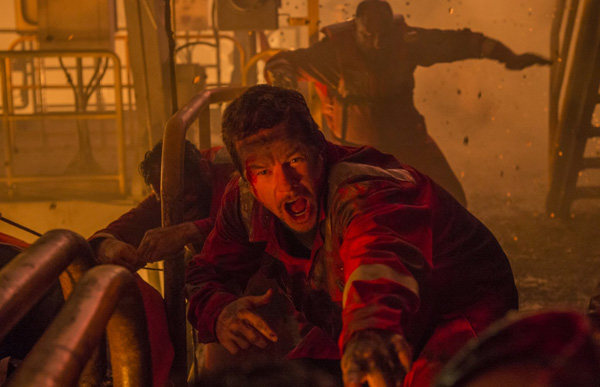
‘Deepwater Horizon’ is a completely different type of project that demanded convincing, realistic looks based on live action plates for a major undersea mining operation. Although it depicts real events within a true story, the film is a drama and must bring the characters to life. ILM Singapore and Iloura have both entered their shots into AEAF.
Read about Iloura’s expert work on this movie here.
AEAF Awards is excited to receive work on the Academy Award-winning film ‘The Jungle Book’ from two studios – MPC and Weta Digital. Beyond the VFX vendors’ truly impressive environment building, creature development and animation, the use of virtual production techniques allowed the filmmakers a large degree of control over the final appearance of the movie in spite of their decision to shoot nearly all of the live action on bluescreen sets.
In advance of the shoot, each scene was prepared at MPC, camera moves designed, animal characters roughly animated, detailed lighting plans made, and models of terrain and trees arranged into technical plans. VFX Supervisor Adam Valdez and VFX Producer Philip Greenlow travelled from London to LA to help visualize and plan the script and storyboard development and guide the filming on set. MPC’s visual effects team developed characters, worked out how they would talk, and began crafting the movie’s full CG environments.
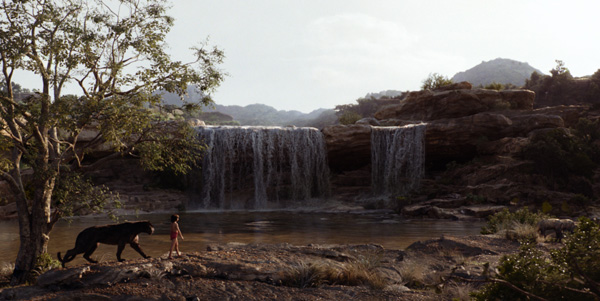
More than 800 CG artists worked for over a year animating over 54 species of animal, crafting full CG environments, and simulating earth, fire and water. MPC built Baloo the bear, Mowgli’s wolf family, Bagheera the panther, Kaa the python, and the tiger Shere Khan including bone, skin and hair. 54 species of animals and 224 unique animals were created and new tools written to simulate muscles, skin and fur. For each shot and each movement, animation artists followed research in animal behavior, used finely tuned animation tools to hand animate the jungle creatures.
The jungle involved creating a wide variety of plants, trees, vines and rocks based on thousands of photographs of real locations in the Indian jungle resulting in a massive library of resource material. Each scene is handcrafted plant by plant, detailed down to thousands leaves and vines plus rivers, mudslides and grasses. Contributing to 80% of the frame 100% of the time, the jungle itself is the single biggest creation in the movie
MPC has also entered the 1,100 shots they created for ‘Passengers’ and the more than 1,000 extremely beautiful and unusual shots designed and created for ‘Ghost in the Shell’. Read Digital Media World’s in-depth article about ‘Passengers’ here, and about ‘Ghost in the Shell’ here.
Cinesite’s work on ‘Assassin’s Creed’, led by VFX Supervisor Christian Irles, includes hand-to-hand combat scenes, leaps between buildings, sword fights and other stunts, for which the filmmakers wanted a very practical treatment. Nevertheless, CG and animation played a major role. One particular chase sequence ends with a prison carriage flipping over and another launching over a cliff. The shots involved the production and compositing of multiple live action plates, special effects and Cinesite’s digital augmentation.
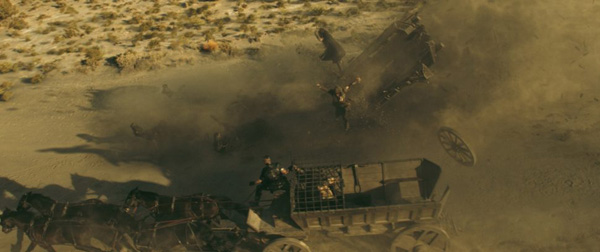
When the wagon falls over the cliff, a full CG cliff was modelled and textured, and the Spanish desert extended, to enhance the original photography and achieve full CG shots. Digital versions of the main characters and the prison wagon were also required. There are also CG weapons and many, many layers of dust and debris FX throughout the sequence. Roto-animation models of the actors were used in shots with multiple plates to ensure correct scale.
Other Cinesite FX included a breakout from Abstergo Industries. Set extensions and CG weapons were added to complete the heavy battle between the Assassins and Abstergo Industries guards in the Animus Project laboratory. Cinesite also recreated an extensive London environment for the final sequence of the film. The camera starts outside the Freemason’s Hall and in a single camera move we go from there all the way to the top of another building four blocks away to reach the Assassins on the rooftop.
‘Ghostbusters’ is also at AEAF Awards with work from MPC and ILM Singapore. Led by VFX Supervisor David Seager, MPC’s Vancouver team completed more than 250 shots focused on the finale and Times Square in the 1970s, a 2D no-ghost cartoon, a 300ft tall 3D character and FX work.
For Times Square, the shoot took place on a green screen set with minimal set pieces, due to restrictions in the real location. Creating the surrounding buildings and environment required extensive research to capture period architectural detail for the fictional Mercado building exterior, lobby and upper floors.
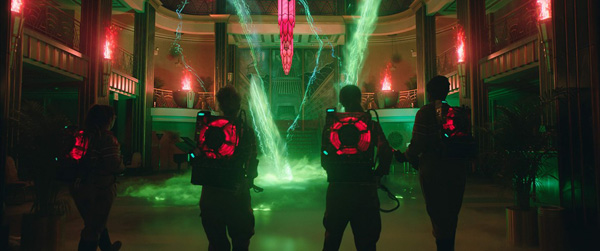
MPC created the final monster form of the ghost Rowan as a giant recreation of the classic no-ghost logo. A 2D artist animated the logo which was then composited into the backgrounds of the Mercado lobby and finally transformed into a 300ft tall, full 3D animated character. The challenge lay in integrating a simplistic, art-directed cartoon character into photographic plates. MPC modelled the character as if he had an underlying cartoon anatomy that had been wrapped in a loose cloth, giving him a secondary anatomical motion with traditional muscle, fat and skin simulations giving the ghost more realistic features. To achieve the proper sense of scale, a high polygon count cloth simulation was created on the final surface around the cartoon.
MPC’s FX work included proton streams and ghost emanations combining fluid and particle simulations, a giant ghostly portal and massive destruction FX. A pipeline was built for the proton streams to allow enough control to define their shape, to which chaotic lightning effects were added before passing these elements to compositing.
More Feature Film Contenders
At AEAF Awards also look for and Weta Digital’s entries for new films ‘Valerian and the City of a Thousand Planets’ and ‘War for the Planet of the Apes’, and for Iloura’s work on the thriller ‘John Wick: Chapter 2’. Further to ‘Deepwater Horizon’ and Dr Strange’, ILM Singapore entered their shots for ‘Kong: Skull Island’ and the recent Star Wars film ‘Rogue One’.
